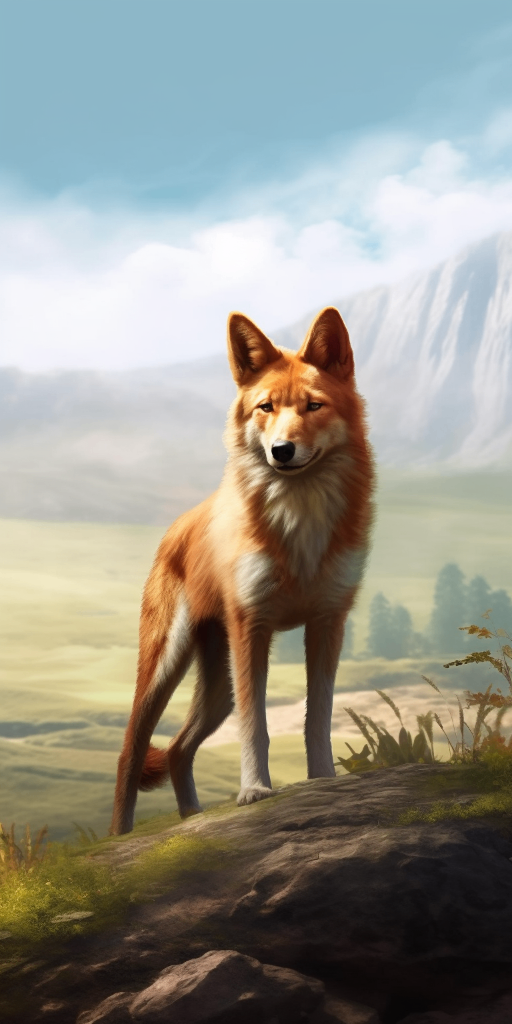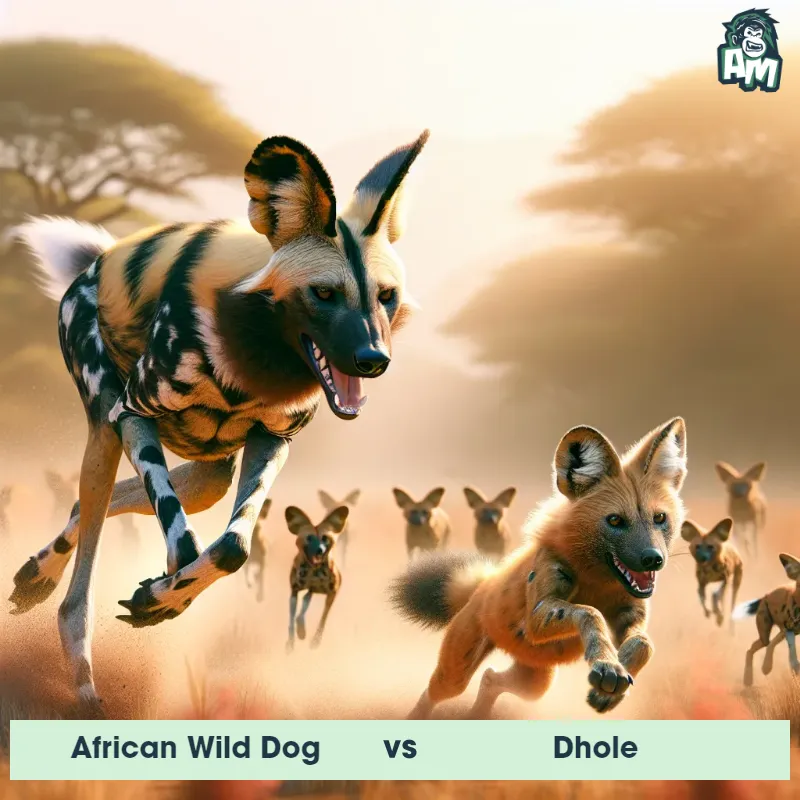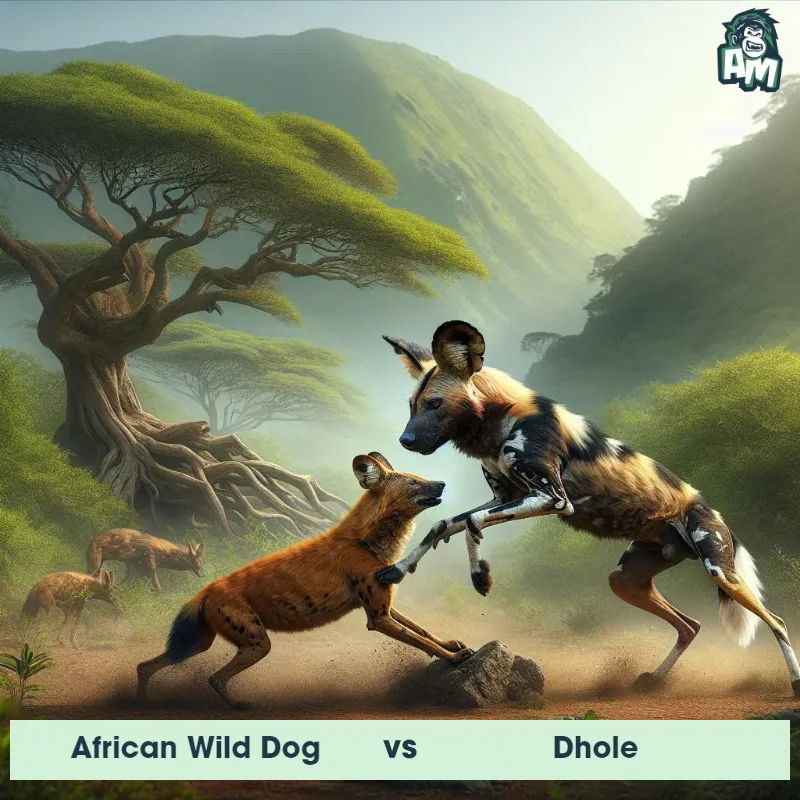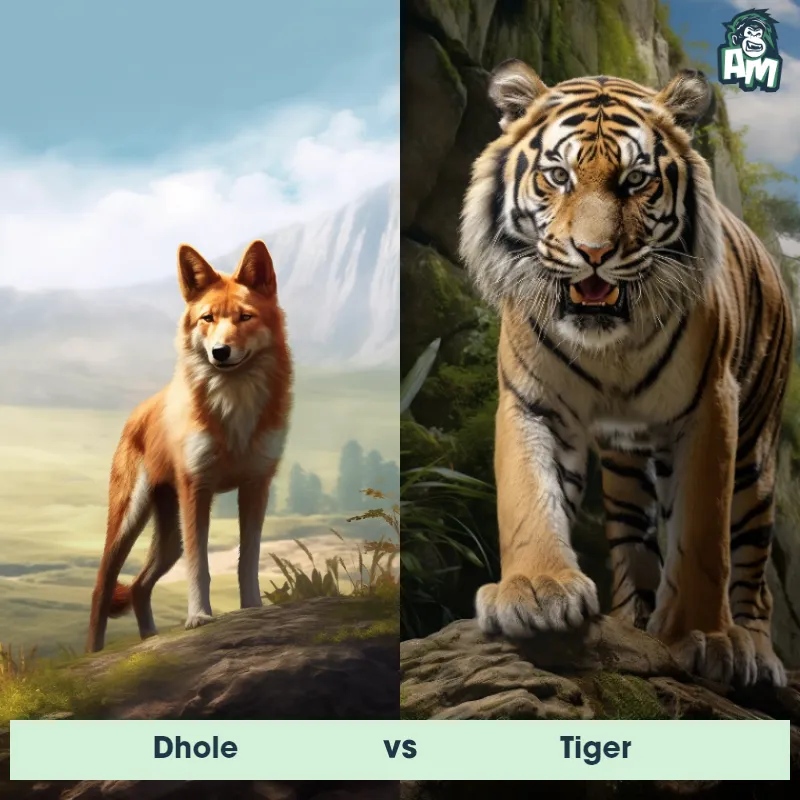The Dhole
The Dhole, also known as the Asiatic wild dog, is a highly social and territorial mammal native to Asia. These medium-sized canids have a distinctive appearance characterized by a reddish-brown to golden-yellow coat, with a blackish patch on their throat, chest, and tail tip. Dholes have rounded ears and a bushy tail, which helps to maintain balance while running at high speeds. They are known for their exceptional hunting skills and cooperative hunting tactics, which involve remarkable communication and coordination among pack members. Dholes primarily inhabit forests and grasslands, and they have a diverse diet that includes deer, wild boar, and smaller prey.

| Dhole | |
|---|---|
| Size | 20-25 inches (50-65 cm) at the shoulder |
| Weight | 22-44 pounds (10-20 kg) |
| Speed | Speed: 34 mph (55 km/hr) |
| Key Strength | Agility and teamwork in pack hunting |
| Biggest Weakness | Smaller size and weaker bite force compared to some predators |
| Scientific Name | Cuon alpinus |
| Family | Canidae |
| Habitat | Forests, grasslands, and mountains |
| Geography | Parts of Asia, including India, China, and Southeast Asia |
| Diet | Carnivorous, preying on deer, wild boar, and other large mammals |
| Lifespan | 8 years - 10 years |

The Dhole
The Dhole, also known as the Asiatic wild dog, is a highly social and territorial mammal native to Asia. These medium-sized canids have a distinctive appearance characterized by a reddish-brown to golden-yellow coat, with a blackish patch on their throat, chest, and tail tip. Dholes have rounded ears and a bushy tail, which helps to maintain balance while running at high speeds. They are known for their exceptional hunting skills and cooperative hunting tactics, which involve remarkable communication and coordination among pack members. Dholes primarily inhabit forests and grasslands, and they have a diverse diet that includes deer, wild boar, and smaller prey.
Fun Fact: Dholes are exceptionally agile and can jump up to six feet vertically, which allows them to easily navigate challenging terrains and obstacles during hunts.
| Dhole | |
|---|---|
| Size | 20-25 inches (50-65 cm) at the shoulder |
| Weight | 22-44 pounds (10-20 kg) |
| Speed | Speed: 34 mph (55 km/hr) |
| Key Strength | Agility and teamwork in pack hunting |
| Biggest Weakness | Smaller size and weaker bite force compared to some predators |
| Scientific Name | Cuon alpinus |
| Family | Canidae |
| Habitat | Forests, grasslands, and mountains |
| Geography | Parts of Asia, including India, China, and Southeast Asia |
| Diet | Carnivorous, preying on deer, wild boar, and other large mammals |
| Lifespan | 8 years - 10 years |
Match Highlights
Dhole Matchups
We use AI to simulate matchups between the Dhole and other animals. Our simulation considers size, strength, and natural predatory behaviors to determine the most likely outcome.

Can't find the Matchup you want?
Create Your Own MatchupDhole: Diet, Predators, Aggression, and Defensive Behaviors
What do Dholes eat?
Dholes primarily feed on small to medium-sized prey such as deer, wild boar, and rodents. They are opportunistic hunters and will also scavenge on carrion if the opportunity arises. Dholes are skilled pack hunters, working together to take down larger prey.
Do Dholes have any predators?
While Dholes are apex predators in their habitat, they can sometimes be preyed upon by larger predators such as tigers and leopards. However, due to their pack mentality and ability to defend themselves, Dholes are not easy targets for predators.
Are Dholes aggressive?
Dholes are known for their aggressive behavior, especially when defending their territory or young. They are highly territorial animals and will fiercely protect their pack and resources from rivals. However, they are not typically aggressive towards humans unless provoked.
Do Dholes fight?
Dholes are known to engage in aggressive encounters with other Dholes or rival predators. These fights can be intense and often result in injuries or even death. Dholes use their sharp teeth and strong jaws to inflict harm on their opponents during fights.
How do Dholes defend themselves?
Dholes have several strategies for defending themselves against threats. They rely on their strong pack mentality, teamwork, and communication to coordinate attacks on threats. Dholes also use their speed and agility to evade predators and their sharp teeth to defend themselves in close combat.
What is Dholes' biggest weakness in a fight?
Despite their strength and aggressive behavior, Dholes are vulnerable to larger predators such as tigers and leopards. These predators can easily overpower Dholes in a one-on-one encounter due to their size and strength. Dholes rely on their pack mentality and numbers to defend themselves against such threats.
Fun Fact: Dholes are highly vocal creatures and employ a repertoire of various sounds, including whistles, screams, and clucks, to communicate with pack members during hunts or to warn intruders.
Fun Fact: Dholes have a remarkable sense of smell, with a scenting ability that is seven times greater than domestic dogs, enabling them to track prey across long distances with great accuracy.






















